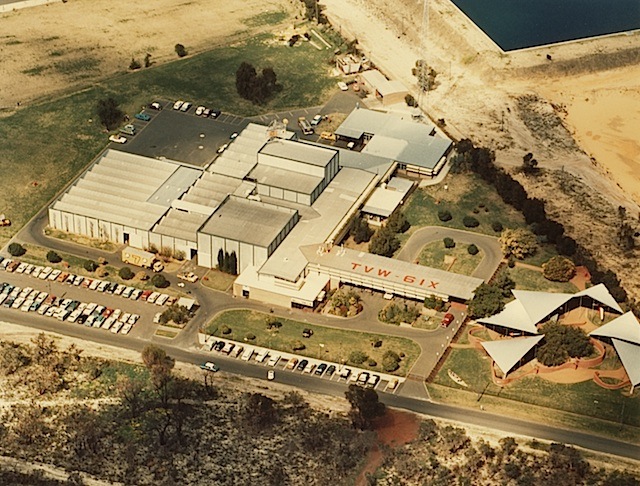
Western Australia’s first television station TVW Channel 7 opened on October 16th, 1959. The second commercial station STW Channel 9 commenced full program broadcasts on June 12th, 1965. There was a long pause before the third commercial station NEW Channel 10 opened on May 20, 1988.
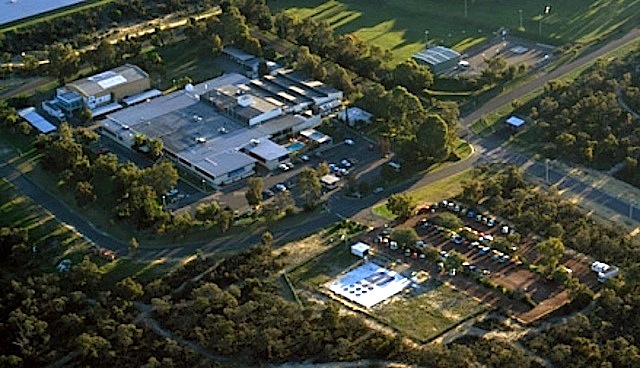
All commercial stations are located in the Dianella area, whilst the Australian Broadcasting Corporation’s ABW Channel 2 studios are in East Perth. A little more than six months elapsed between the launch of TVW and ABW opening on May 7th, 1960.
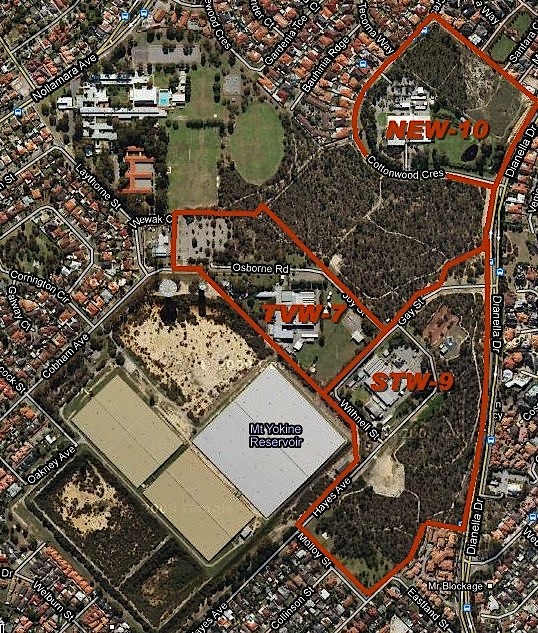
To this date, all stations remain located at their original sites, with the exception of the ABC. The former ABC studios in Adelaide Terrace, Perth, were state of the art in 1960. It was a vast site with a huge staff spread over multiple buildings. The ABC’s new studios in Fielder Street, East Perth, are more compact under the same roof with limited car parking underneath. Not only does the new site require less real estate, but it is better suited to team building and internal communications, since the shedding of personnel after the centralisation of production, which began in the 1980s and accelerated in the 1990s. Moving to a new building also offered the opportunity to embrace advance technology with a complete refit. Obsolete air-conditioning, building maintenance and asbestos were also issues resolved by the move.
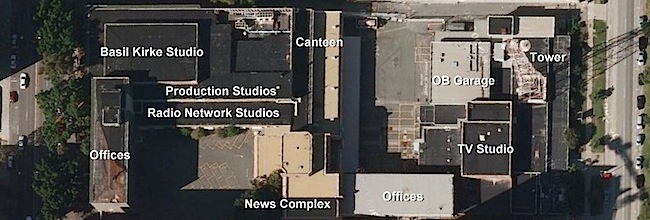
Network TEN was the first to reevaluate their property holdings, resulting in sales and downscaling of facilities, combined with the outsourcing of production. TEN now hires ABC studios in Sydney and Melbourne, whilst the ABC relocated to the TEN site in Brisbane, to overcome a cancer hazard. The Seven Network was next with new locations in Sydney, Melbourne and Adelaide. The Nine Network are now embracing this philosophy with the GTV Channel 9 studios in Melbourne proposed for redevelopment.
Meanwhile in Perth, there has been some indications that the commercial television stations may wish to relocate from the Dianella area, or dispose of surplus land. The stations generally have larger buildings and land holdings than they now require and modern technology replaces the need for the stations to be located on such high ground for link paths to the transmitters (the original reason for locating in the area).
Dianella residents have complained about television news helicopters using the airspace above them, while activists are concerned about the welfare of the local kangaroos that inhabit the remnant bushland, should there be any future development, disposal or rezoning within the Media Precinct.
Channel 7 has submitted plans to the East Perth Redevelopment Authority, the planning body for the Northbridge Link project, which would allow it to relocate to the site of the closed Perth Entertainment Centre, which it owns. Earlier the Seven Network offered to add a sliding roof to the Entertainment Centre as an alternate proposal to the Perth Arena. The government instead opted for the Perth Arena, which will have a 15,000 seat capacity for concerts and 13,500 seats for sporting events such as basketball, netball and tennis, compared to the Entertainment Centre’s 8,200 seat capacity.

So far the cost overrun of the new Arena is $323 million and the project is three years behind schedule, according to a report released by the Auditor-General. Somewhat reminiscent of the building of the Entertainment Centre where construction costs and operating costs were considerably higher than anticipated.
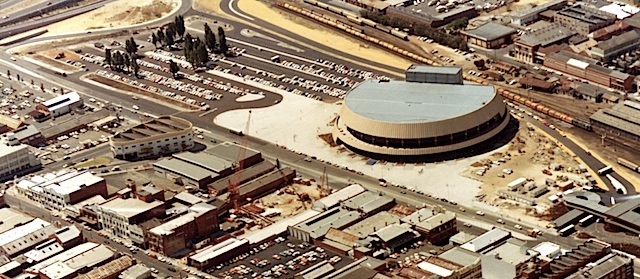
In 1973, the Entertainment Centre’s estimated total project cost of $5,000,000 was far exceeded as a result of industrial trouble, an acute shortage of materials and the biggest price/wage spiral in the then history of the building industry. The outcome was to cost more than $8 million. This almost sent TVW broke until the State and Federal governments were approached for assistance, with the State Government taking ownership of the building in 1975. In comparison, the original budget for the Perth Arena was $160 million, but has now soared above the $500 million mark.
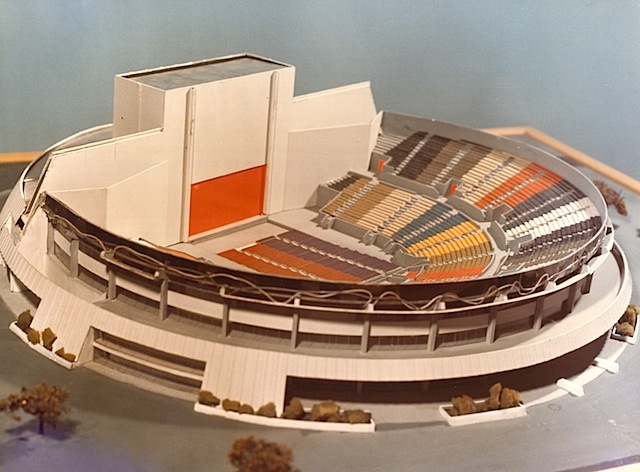
Perth Entertainment Centre
WA TV History
The Perth Entertainment Centre (originally the Channel 7 Edgley Entertainment Centre) is Western Australia’s largest, but now disused 8,200-seat indoor arena, which was opened on December 27, 1974, and played host to many theatrical productions, circuses, corporate functions and the 1979 Miss Universe beauty quest. It was also the home to the Perth Wildcats basketball team from 1991 until 2001, however hasn’t been in use since 2002.
In 1988-89, the Kerry Stokes private company Australian Capital Equity purchased the Perth Entertainment Centre from the State Government for about $14 million.
In 1996, Kerry Stokes acquired a strategic 19 per cent stake in the Seven Network (later grew to 43 per cent) and became Chairman, then in 1999 sold the Entertainment Centre to the Seven Network for $18,595,100.
In 2002, the Perth Entertainment Centre closed.
In 2006, Seven Network Limited and Kohlberg Kravis Roberts & Co created a new joint venture, Seven Media Group, with a presence in broadcast television, magazine and online applications.
Seven Group Holdings (SVW) is now made up of the Seven Network and the WesTrac Group, an authorised Caterpillar dealer, a merger which became effective on 29 April 2010 and takes Kerry Stokes holding to 68% of SVW.
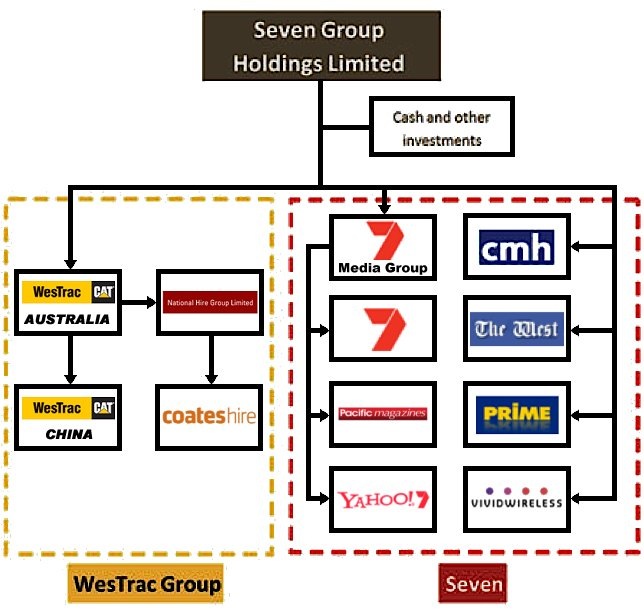
Seven Group Holdings (SVW) has 100% of Westrac, 45% of the Seven Media Group, 24% of the West Australian, 23% of Consolidated Media Holdings and 11% of Prime. SVW also holds 58% of Engin and 100% of Vivid Wireless, which gives them an interest in new media, being broadband telephony and internet provision. Seven Group Holdings is thus widely diversified to cushion against a loss of popularity with the traditional print and electronic media. The risk has also been spread with the old media holdings, by making the Seven Media Group a joint venture. Yet even the new media has many risks, as yesterday’s technology soon becomes obsolete whilst competition is continually becoming tougher.
What is happening in the USA is like a crystal ball for Australia, as it often provides a glimpse of what is likely to happen here in the future. Old media is on a decline in the US. People aged 14 and younger are less likely to watch conventional television or read newspapers, preferring to view their video content on personal computers, game consoles, smart-phones and the iPad. Such content is viewed on demand, rather than what a television station executive schedules. In addition, there is a move to narrowcasting, as seen here with TEN having a high definition sports channel, whilst the ABC has a 24 hour news channel. The free-to-air market is becoming fragmented with many channels, each aiming at a specific demographic. Television is still going through a transition, started with new technology, networking, computerisation and automation, leading to much cost cutting and staff shedding. The transmission aspect of TV stations are a much leaner operation now than ever before, though the demand for content is on the increase with extra outlets. People still want a variety of programs, its just that the means of delivery is undergoing change.
Meanwhile on the live entertainment scene, the Perth Entertainment Centre remains closed and is due to be demolished for apartment and office development, with the new Perth Seven Network Studios as part of the first stage of the state government’s Northbridge Link project.
Proposed demolition of the Perth Entertainment Centre
WA TV History
A look at one of the biggest development projects in Perth’s history where the city centre will get a new heart after the State was granted $236 million in the Federal Budget to sink the Fremantle railway line and the city bus station, which separates the CBD and Northbridge entertainment precinct. The project will include the creation of a sporting and entertainment hub near Milligan Street and the demolition of the Channel 7-owned Perth Entertainment Centre, replacing it with a commercial and residential development.
Until the Perth Arena is operational, Perth is left without a suitable venue for large concert acts, hence the use of Subiaco Oval for the forthcoming U2 concert. It is the first time since 1998 that the Irish rock band has included Perth on their highly anticipated Australian 360° tour. But even the Perth Arena will be much too small for such an extravaganza.
U2 – Live at Subiaco Oval
Tour Dates announced for Australia and New Zealand.
November 25 Auckland, NZ (Mt. Smart Stadium)
December 01 Melbourne, AU (Etihad Stadium)
December 08 Brisbane, AU (Suncorp Stadium)
December 13 Sydney, AU (ANZ Stadium)
December 18 Perth, AU (Subiaco Oval)
December 19 Perth, AU (Subiaco Oval)
The U2 concerts are indicative of the current direction of arena style productions. When the first show was sold out, a second show was added for the following day, with the seating sold around the entire bowl. Subiaco oval is the largest stadium in Western Australia with a capacity of over 43,000 seats. The $500 million Perth Area is unlikely to house the massive stage for this production and uneconomical for the promoters, with only a 15,000 seat capacity for concert use. U2 would have to repeat their performance six times to accommodate the same audience as Subiaco can over just two shows.
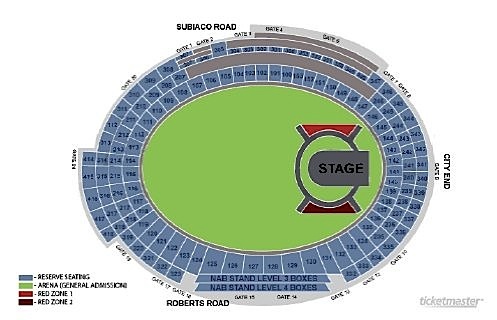
The centrepiece of the U2 tour is an imposing 360 degrees, 57 metre bug-like spaceship on four legs, nicknamed ‘The Claw’. The steel structure rises 150 feet from the floor over a massive stage with rotating bridges, with a cylindrical video system of interlocking LED panels, to create an intimate all around experience for the thousands of concert goers.

It costs a reported $750,000 a day to keep the show on the road, so the performers need to recover a vast sum per show to make it viable. The unfinished and highly expensive Perth Arena will thus be much too small for such an event.
In December, 2010, Bon Jovi will return to Subiaco Oval with another gigantic stadium show as part of The Circle world tour, whilst earlier, the AC/DC Black Ice Concert selected the same venue for their March, 2010 performance.
Attracting big shows to Perth was on the minds of entrepreneurs back in the early days of television. When television had a big impact on the profitability of live theatre productions, it was Eric Edgley who looked to the Soviet Union as a vast resource of theatrical attractions. A practice continued by his son Michael. In the 1960’s they brought to Australia such fine acts as the Bolshoi Ballet, The Georgian State Dance Company, The Omsk Siberian Company, The Great Moscow Circus, the Berioska Dance Company of Moscow, The Opsipov Balalaika Orchestra, The Moiseyev Dance Ensamble of the USSR and the Stars of the Russian Classical Ballet. By the 1970’s, Michael Edgley was bringing to our country a much wider range of acts, including many American stars, The London Festival Ballet with Rudolf Nureyev, The Vienna Boys Choir, Annie and much more.
TVW’s Brian Treasure had a close working relationship with Michael Edgley, with Seven promoting each new stage extravaganza by generating national TV commercials, comprehensive TV advertising campaigns and featuring the many world class acts on TVW’s ‘In Perth Tonight’. Treasure also enjoyed a close relationship with the Disney organisation which resulted in the Disney on Parade stage shows coming to Australia.
Many other big Disney productions followed, but the difficulties of presenting them in a circus tent persuaded Treasure and Edgley of the need for a large permanent enclosed venue in Perth, resulting in TVW building The Channel Seven Edgley Entertainment Centre, later to be renamed the Perth Entertainment Centre after the state government acquired the facility.
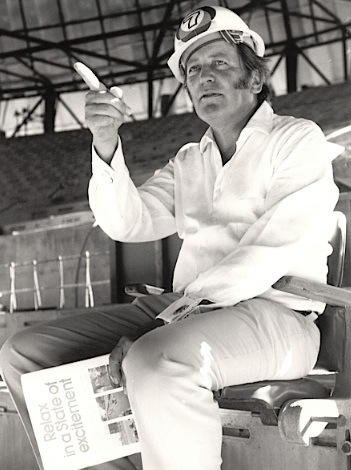
Since the Perth entertainment Centre closed in 2002, promoters have been lamenting its loss.
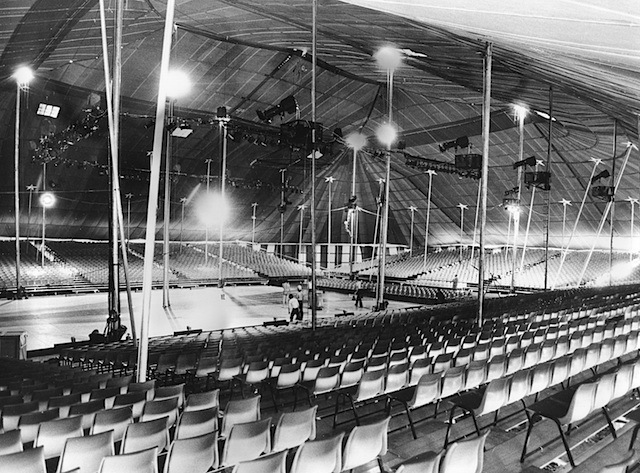
Michael Edgley reverted back to the traditional tent when the Great Moscow Circus returned to Perth last year.
- What will become of the Perth Entertainment Centre?
- Entertainment Centre closure still leaves sour taste
- Can The Entertainment Centre rise again?
- Perth Entertainment Centre – Wikipedia








Is The Entertainment Centre still usable, despite the fact it has been mothballed for over eight years? Has it been stripped of its seating, carpet, stage equipment, PA, etcetera?
If it hasn’t been gutted yet, I think it’d be grand if it was cleaned up one last time prior to its demolition and given a fitting finale with a “one last time-WA made” extravaganza, with perhaps a few concert festival shows featuring the cream of WA’s music scene, such as John Butler Trio, Dave Hole, The Waifs, Eskimo Joe, Gyroscope, Sleepy Jackson, et al.
Better than the anticlimactic Christian Youth Pop show which was the last performance in mid-2002.
The building was conceived as being as flexible as possible but the principal focus was on large theatrical shows such as Disney On Parade. They were targeted at family audiences and could fill the venue for months on end. These shows have fallen out of favour now and theatre goers who are older prefer more intimate venues. I don’t think a 3000 seat lyric theatre conversion as propsed here http://www.watoday.com.au/wa-news/the-entcent-can-rise-again-20100312-q3jf.html is viable.
The new State Theatre only seats 500 odd but this will cover the small theatrical market. His Majesties also has a proscenium arch and is larger.
The mainstay of the Entertainment Centre became concert events but as this article explains, blockbuster events require many more seats or an outdoor venue. I can’t really swallow the line that a new building -The Perth Arena- is justified on the basis of retaining The Hopman Cup. Filling a venue at that time of year is historically easy. I think the Entertainment Centre was well suited to the sporting events and smaller concerts. I suspect the real reason for its replacement had to do with intransigence in negotiations between Stokes and the State/local Governments.
Hello Friends, i remember working with Brian Treasure,Mike Girilikis,
Mike Edgley,Edna Edgley,Gene Columbus,The Nocks in the 1975 Season for
The Peter Pan Unit of Disney. a MAGIC of a Production and Promotion
for the Austrailian Market. in a one week time frame these brain child of Promoters held,
The Jesus Christ Superstar Tour, The Peter Pan Disney Show and The
Bay City Rollers, Donaven and The Deep Purple Band all to packed houses.
Mike and Brian always made “All Access and VIP” available to me!
Those were great Events and Times.
Eugene Nock
President
Nock Entertainment Group Inc.
nockair@aol.com
http://www.nockwoldentertainment.com